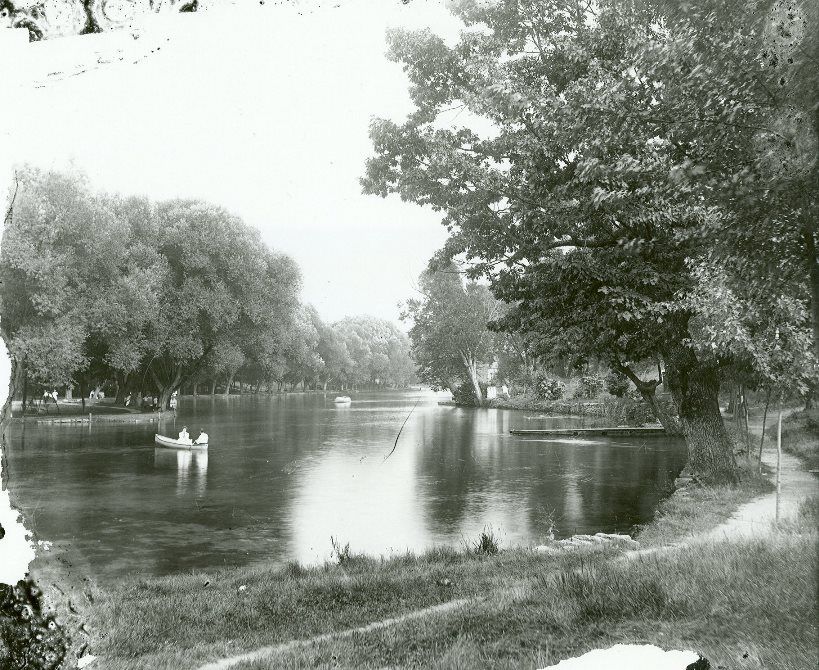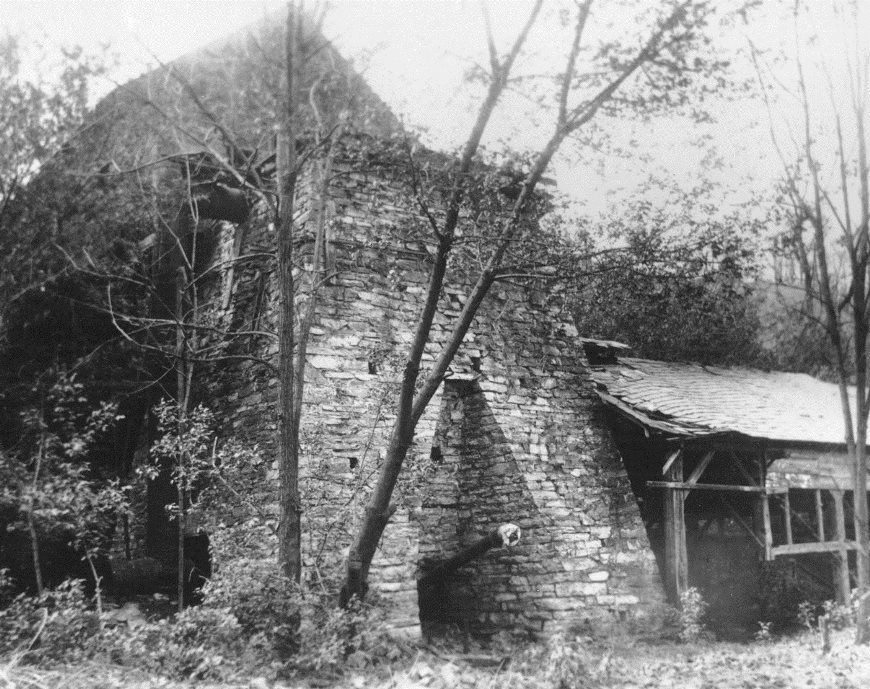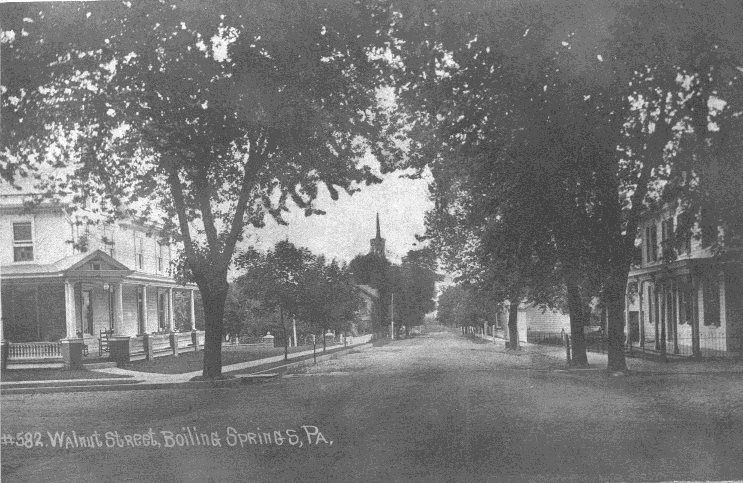Harry Stickler and his Sister Kate of Boiling Springs
Harry Strickler was in possession of a relic from the battlefield at Gettysburg. It was a six-pound bombshell charged with powder and bullets.1 It nearly cost him his life.



Top: The lake at Boiling Springs; both sides of the lake can be seen and there are two canoes in the water. (00858A#03);
Middle: Remains of the furnace from the Iron Works at Boiling Springs (01059A#01);
Bottom: Walnut Street, Boiling Springs, circa 1908 - Clyde A. Laughlin (37A-14-04).
The history of the Boiling Springs area is multi-layered and revolves around its water resources. Being located along the Ironstone Ridge that crosses the Cumberland Valley, a number of natural springs arise in the area and combine to form a stream that empties into the Yellow Breeches Creek just south of the village. These approximately 20 springs were dammed up in the 1750s to create a seven-acre lake that produced water power for what was eventually known as the Carlisle Ironworks, operated by Michael Ege. The first iron furnace in Cumberland County was built here around 1760, and the ironworks operated until the end of the 19th century.
By the 1830s, in addition to the ironworks, there were two farms in the area. South of Old York Road was the Abraham Kaufman farm; to the north was the Frederick Brechbill farm. These two families were very prominent in the 19th century history of the area. Frederick’s son, Philip Brechbill, built the Boiling Springs Tavern in 1832 that served travelers passing through the area. Abraham’s son, Daniel Kaufman, operated a station on the Underground Railroad from 1835-1847, using his barn and an overgrown area known as Island Grove. He was sued by a Maryland slave owner in 1858 and after several years of litigation was fined about $5,000.
The village of Boiling Springs was founded in 1845 by Daniel Kaufman on the west side of the lake on land that he cleared on his father’s farm. The village grew slowly until the 1870s when the economy of the area prospered due to new ownership of the ironworks. Daniel and Cary Ahl enlarged the facility and brought the railroad to the village. They beautified the lake area and created a railroad park at Island Grove to attract visitors to the area.
Boiling Springs grew and became a commercial center for the surrounding area. The trolley line was extended to the village in 1895, and the Boiling Springs Trolley Park operated from 1905 to 1930. The park brought thousands of visitors to the east side of the lake for recreation and to enjoy the natural beauty of the area.
From the 1930s to the present, Boiling Springs area has become a residential community, known for its lake, 19th century homes, fly fishing and passive recreation. The village was placed on the National Register of Historic Places in 1984. The area was named a site on the National Underground Railroad Network to Freedom in 2007. The Appalachian Trail was rerouted through Boiling Springs in 1991 and the Mid-Atlantic Regional Office of the Appalachian Trail Conservancy is located by the lake. Boiling Springs was named an official Appalachian Trail Community in June 2011.
The provincial village and its charming lake continue to attract many visitors. The Boiling Springs community celebrates its heritage and beauty through several annual events. Foundry Day, a juried arts and crafts festival, is held on the first Saturday of June. During the Carlisle area’s celebration known as Summerfair, the lake is the site of “Anything Floats,” a racing competition of improvised floating devises. In December the lake is decorated with luminaries and a floating lighted Christmas tree.
Harry Strickler was in possession of a relic from the battlefield at Gettysburg. It was a six-pound bombshell charged with powder and bullets.1 It nearly cost him his life.
For a comprehensive history of Boiling Springs see: Richard L. Tritt, Randy Watts, editors, At a Place Called the Boiling Springs (Boiling Springs Sesquicentennial Publications Committee, 1995).